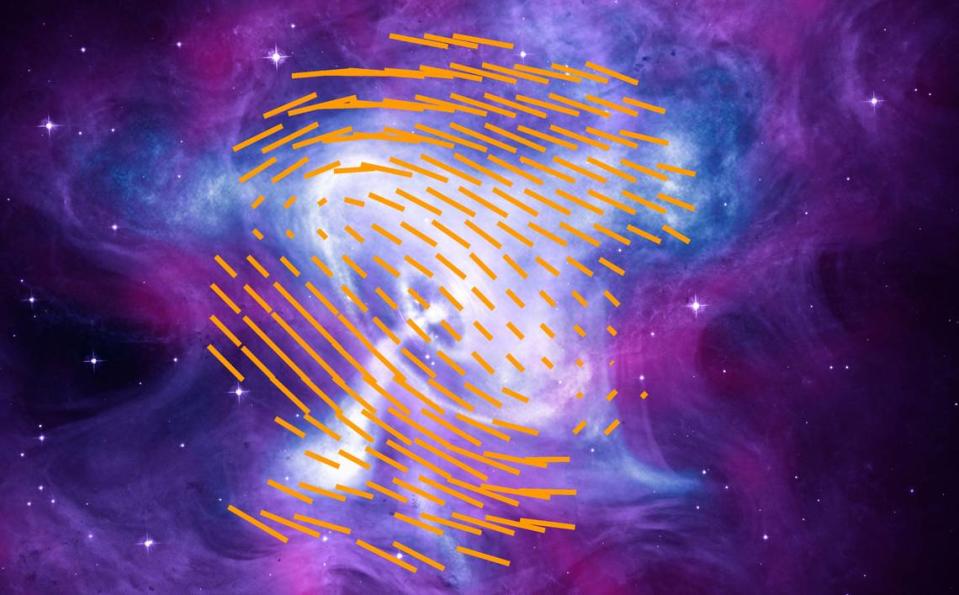Giant space doughnut? New NASA mapping reveals longstanding mysteries of iconic nebula
A NASA space observatory has captured one of the most historic and well-studied nebulas in a completely new light.
You’ve probably heard of the iconic Crab Nebula, or at least you’d recognize photos of the ghostly remains of a long-gone supernova star that’s 6,500 light-years from Earth.
But you’ve never seen it like this before, according to NASA.
NASA’s Imaging X-ray Polarimetry Explorer (IXPE) recently captured a much more “detailed, nuanced map of the Crab Nebula’s magnetic field, revealing more of its inner workings than ever before,” NASA said in an April 7 news release.
For starters, it’s doughnut-shaped. And a long, bright beam of light is seen shooting out from the doughnut hole.
“IXPE data show that the Crab Nebula’s magnetic field resembles that of the Vela Pulsar Wind Nebula, which is also donut-shaped,” officials said in the release. “But at the Crab, scientists were surprised that areas of magnetic field turbulence were more patchy and asymmetrical than expected.”
The new IXPE data helps “resolve longstanding mysteries about the well-studied Crab Nebula and open new questions for future study,” the release said. The findings were published in the journal Nature Astronomy.

While almost every modern large telescope has pointed to the Crab Nebula to better understand it, only NASA’s IXPE has the ability to study the polarization of X-rays, meaning the organization of electromagnetic fields, officials said.
“The Crab is one of the most-studied high-energy astrophysical objects in the sky,” said Michela Negro, a research scientist at NASA Goddard Space Flight Center and co-author on the study. “So it is extremely exciting that we could learn something new about this system by looking through IXPE’s ‘polarized lenses.’”
The IXPE found “about the same average polarization” as previous studies did in the 1970s — about 20%. But the observatory’s “more sophisticated instruments” refined the angle of polarization and allowed scientists to look at different polarizations across the entire nebula to determine how the magnetic field is organized, and how its particles are hurled toward the speed of light, the release said.
That means scientists were able to examine X-rays not only from the Crab Nebula, but those coming from the doughnut-shaped sphere of magnetic fields around it, called the pulsar, as well, the release said.
“Within the magnetic field, shocks generated by the pulsar’s ‘wind’ are propelling particles close to the speed of light,” the release said.
Niccolo Bucciantini, astronomer at the INAF Arcetri Observatory in Florence, Italy, led the study, the release said.
“This is a clear indication that even the more complex models developed in the past, with the use of advanced numerical techniques, do not fully capture the complexity of this object,” Bucciantini said.
Big Bang created everything. Or did it? Physicists propose a second ‘Dark Big Bang’
Home away from Earth? Planet with promise found 31 light-years away, researchers say
See the northern lights sparkle over Washington — thanks to a ‘severe’ solar storm

